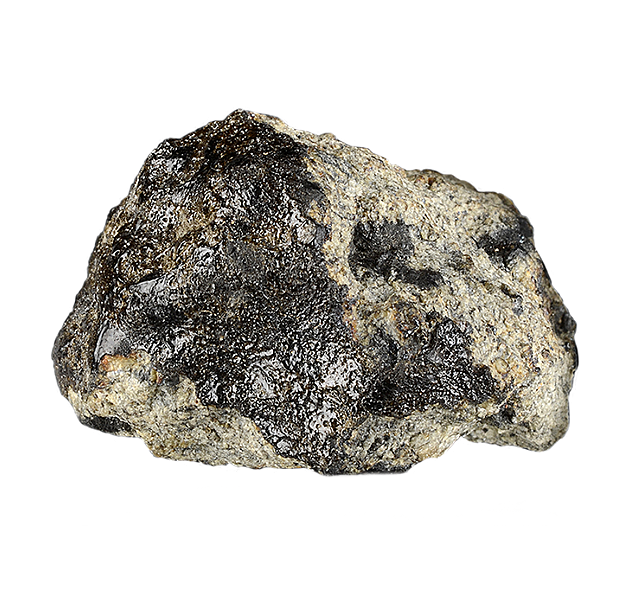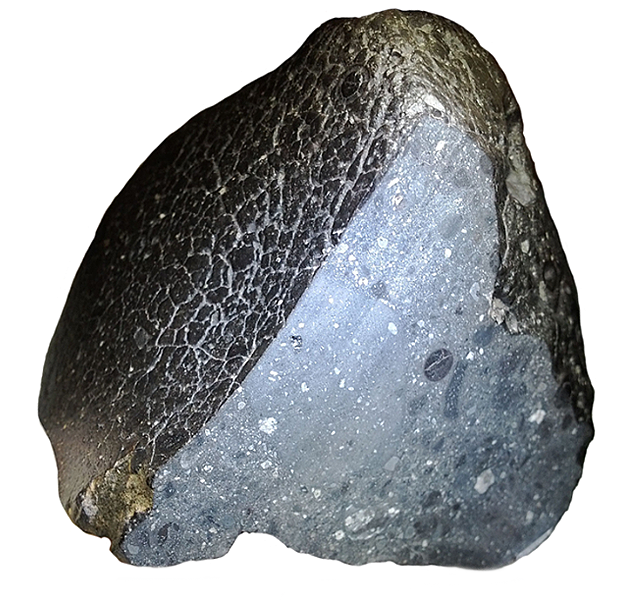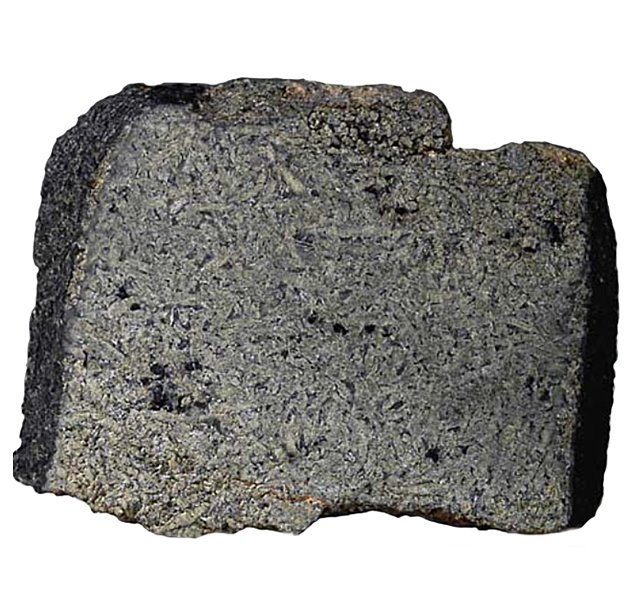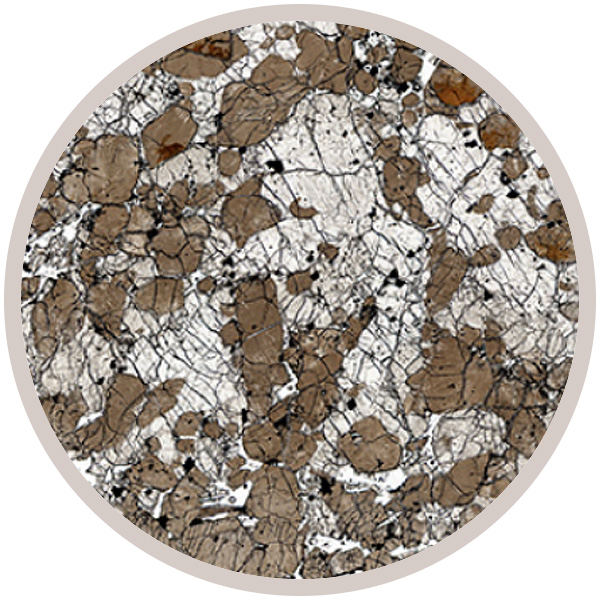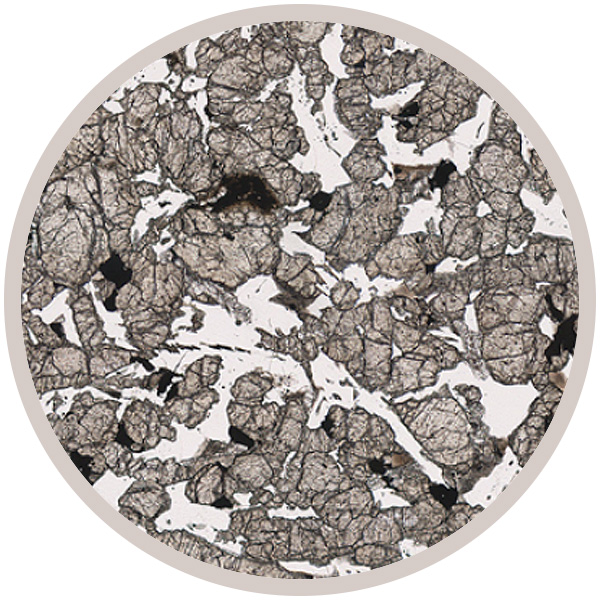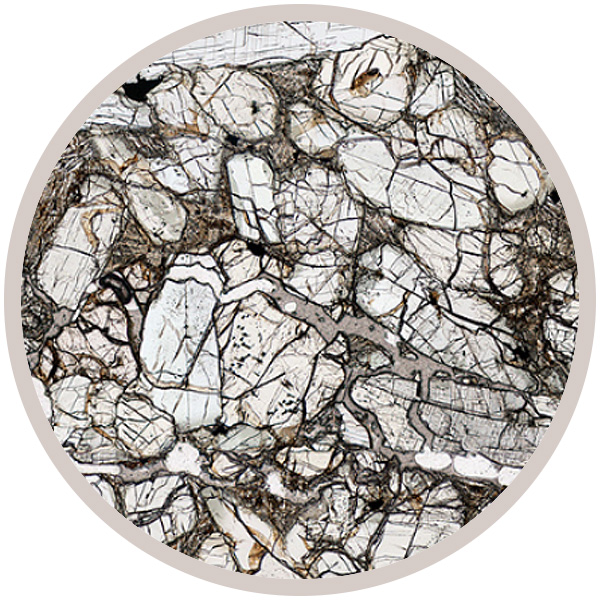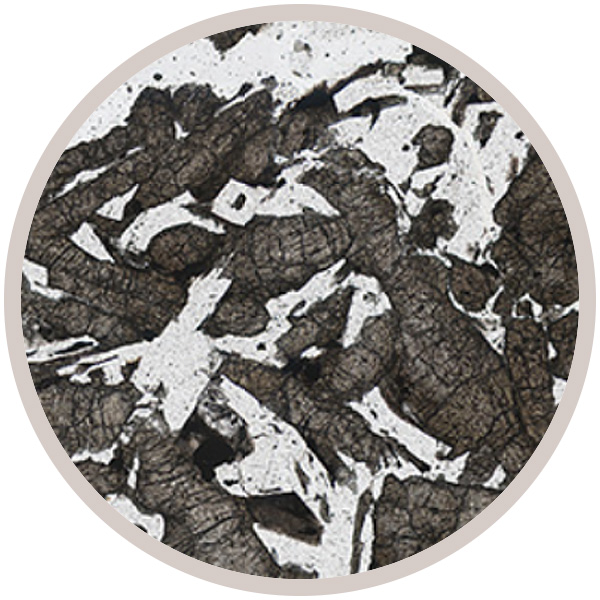
Fact sheet
The Shergotty meteorite fell to Earth on August 25th 1865 at Shergotty (now Sherghati) in the Gaya district of Bihar, India. It weighed 5 kg and is a basaltic rock. The main mass is at the Museum of the Geological Society in Calcutta, India. Shergottites are texturally and mineralogically similar to terrestrial dolerites, although all of their plagioclase feldspar has been shocked to produce maskelynite. The Shergottite meteorite is so severely shocked that it is considered to be the “type locality” for maskelynite.
Shergotty is a pyroxene-rich (70%) and consists of dull-grey to green zoned pyroxene (pigeonite and sub-calcic augite) prisms up to 1 cm long, intergrown with interstitial maskelynite. Melt inclusions in the pyroxene are not uncommon and represent trapped magmatic liquid. Minor minerals include silica (cristobalite?), ilmenite, magnetite, pyrrhotite and phosphate (apatite and whitlockite). Amphibole, baddeleyite, fayalite, hercynite spinel and majorite are also found rarely.
Because of its shock history and relatively young age, Shergotty has been difficult to date and early measurements are now considered suspect. Isotopic techniques have produced a range of ages for the sample - 165±11 Ma (Rb-Sr), 165 Ma (Ar-Ar) and 147±20 Ma (Sm-Nd). It was ejected from the surface of Mars ~ 11 million years ago.
This description is based on the work of NASA scientist Charles Meyer - compiler of The Mars Meteorite Compendium.
This collection of meteorites includes Shergottites, Nakhlites and Chassignites (or SNC meteorites) which originate from the surface of the planet Mars.
They carry unique signals of the surface of the planet that allows scientists to study the composition and age of Martian rocks. The collection includes a sample of the famous ALH84001 meteorite, evidence from which was used in 1996 to begin the debate of 'life on Mars?'.

